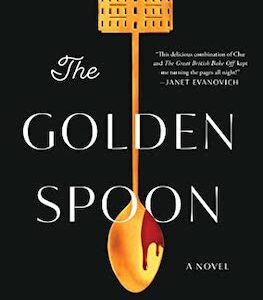In the spring of 1961, Georges Lemay, a dapper thirty-six-year-old French Canadian, spent his days holed up in his cottage on a private island on a river in the Laurentian Mountains north of Montreal, devising his greatest feat yet: the perfect bank burglary.
Emerging in a crowded field encompassing every kind of Montreal criminal, from competing mobs to well-organized groups of bank robbers, Lemay clawed his way to the top of the heap. Maybe claw wasn’t the right word. Lemay was from an upper-middle-class family and had never wanted for anything.
Joseph Louis Georges Etienne Lemay was born in Shawinigan, Quebec, a hundred miles north of Montreal, on January 25, 1925, to Joseph Oscar Lemay and Marie-Lucie Demers, the only boy of their five children. The Lemays were an old and established family originating in the Anjou region of France but had been in Quebec since the seventeenth century. When Georges was a toddler, his father died, leaving him the only male in a family of women who doted on him. He was well educated and at one point even considered going into the priesthood. Instead, his extravagant tastes and his thirst for thrills, whether on a speedboat or in a sports car, scuba diving or flying planes, led him to crime to help finance the lavish lifestyle that was beyond his family’s means.
He worked for his mother’s real estate company, Immeubles Demers, in Montreal, and the legitimate side of his business pursuits was doing well. The city was transforming. Montreal’s metropolitan population was soaring, adding almost a million residents between 1941 and 1961. Construction projects surged in both the public and private sectors. The city’s metro system was being planned, city streets were being renovated, and new skyscrapers were rising downtown. Dorchester Boulevard West, as it was then known, quickly became the financial center not just of the city, but of the entire country. All of Canada’s major banks and insurance companies had a presence there, with three massive bank buildings—the Canadian Bank of Commerce Building, CIL House, and the Royal Bank Tower—in the midst of construction.
At the same time that Montreal was experiencing a surge in growth and prosperity, the city was also becoming the epicenter for Canada’s underworld. The city’s new concentration of wealth was too tempting a prize for Lemay and a host of other criminals to pass up. Besides the thriving international heroin trade that involved the Italian Mafia and a local Irish gang, the city had recently earned the disreputable moniker of the bank robbery capital of North America. In 1959 alone, there had been six hundred armed robberies, many of those involving banks and savings and loans. As Montreal entered a new decade, the crime statistics were only going up. It was estimated that one out of every fifteen chartered banks in the city was robbed a year. The various strong-arm men, desperate drug addicts, wild boys, and well-organized professionals preyed on Montreal banks that leaked like sieves thanks to antiquated security systems—a lack of cameras, enfeebled guards—and a lot of cash on hand at the counters. Then there was the added benefit of provincial and national laws that were as antiquated as the bank security systems. A bank robber was likely to get a five-to seven-year prison sentence if caught in Quebec, less than half of what they would typically end up with just across the border in the United States.
Among the many Montreal criminals at work in the late 1950s and early ’60s, there was Lawrence Day, “The Gentleman Robber,” who’d pulled off a series of precisely planned bank robberies before finally getting caught in 1960 and being sentenced to twenty-five years in prison.
In May of 1960, the fifteen-man-strong Red Hood Gang was busted by the nemesis of the city’s underworld, Joe Bédard, the head of the Montreal Police holdup squad. After forty-five robberies in four years, the gang’s reign was abruptly ended by a shootout with Bédard and his team. Bédard learned of the gang’s plan to rob a bank in north-central Montreal, and he and his men were waiting outside when the robbers emerged from the bank.
Lemay looked down on strong-arm bank robbers. The risk was great and the payoff paltry. He preferred beautifully planned and executed bank burglaries where the scores were high and the risk minimal. He’d cut his teeth as a safecracker working with various Montreal underworld denizens before venturing out on his own, according to police. He was an artist, not a thug, who was enraptured by the planning and precise execution of his burglaries. Even so, Lemay was not squeamish about violence.
In 1955, Lemay was arrested for trying to choke a police officer over a traffic ticket. Two years later, during an investigation into the July 2, 1957, disappearance of his friend Larry Petrov, a thirty-six-year-old Romanian-born welder, drug trafficker, and robber, police arrested Lemay for possessing two unregistered pistols. He was also the prime suspect in Petrov’s disappearance, but the Montreal Police couldn’t prove it.
Investigators also believed Lemay was behind the January 1957 burglary of the Outremont branch of the Bank of Montreal. The branch, in a wealthy suburb north of Montreal, had netted the thieves somewhere between two and five million dollars in cash and securities (between twenty and fifty-one million dollars today), making it one of the biggest bank heists (if not the biggest) in North America up to that time. The thieves targeted the bank specifically because members of the underworld banked there, as did shady stockbrokers and other operators who straddled the line between the straight world and criminality. The victims’ reticence about what they had stored in the looted safe-deposit boxes kept the police from determining an accurate figure for the losses.
Petrov had been in on the score but attempted to cash in some of the stolen bonds too soon. He paid with his life. Petrov was also facing drug charges. There was talk he was going to flip on his accomplices in the bank job to get a pass in the narcotics case.
On July 25, 1957, two teenage girls boating on Lake Ouareau, nearly a hundred miles north of Montreal, discovered a leg wearing a dress shoe and sock floating in the water. It was the only part of Petrov ever found. A thorough search of the lake by police divers turned up no other evidence. The medical examiner determined someone had taken the leg off while Petrov was still alive and surmised that the body part had been deposited in the lake a few weeks after the killing, perhaps dropped in the water from a low-flying plane with the intention of it being found. The medical examiner believed it was a warning to anyone else who might be thinking of turning state’s evidence.
The police interrogated Lemay about Petrov’s disappearance to no avail. He pleaded guilty to the gun charges, was fined twenty-five dollars, and was given time served for the eight days he’d sat in jail.
The Petrov murder went into the cold case pile, as had another investigation involving Lemay, five years earlier and nearly two thousand miles south.
*
Lemay’s wife, Huguette Daoust, a blond-haired twenty-one-year-old beauty queen, went missing in January 1952 while the couple was honeymooning in the Florida Keys. Police and local citizens conducted a massive weeks-long search near Marathon in the Florida Keys, where she was last seen. Searchers, including Lemay, went on foot, by boat, and in small private planes that flew low over the mangrove-choked waterways looking for any signs of her. At the beginning, the police worked on the assumption that Huguette had either fallen into the fast-moving water and drowned or that she had been abducted. But soon their suspicions turned toward Lemay. While scant evidence connected him to the disappearance, Lemay found himself being interrogated by the lead investigator, Deputy Sheri1 James Otto Barker. Barker’s pressure, instead of breaking Lemay, sent him fleeing back across the border to Canada. Barker’s hunch that Lemay knew more than he was saying about what happened to Huguette wasn’t enough to detain Lemay.
A Key West grand jury looked at the case that March. “All we lack is a confession and a body to prove a crime was committed,” Barker told the grand jury after presenting his evidence. While the grand jurors found that “Mrs. Lemay could be dead, and if dead, she died as a result of an act of violence,” they wanted to hear from Lemay in person; however, Lancelot Lester, the state’s attorney, wasn’t willing to give Lemay immunity from prosecution for whatever the witness revealed during his testimony. It was the only way Lemay would appear for the proceedings. This impasse helped derail the flimsy case. The Florida authorities made a big show in the press about Lemay’s unwillingness to tell his side of the story to the grand jury. Lemay responded that he had been in Montreal since leaving Miami, he wasn’t hiding, and under advice from his lawyers, he wouldn’t be going to Florida or making any other public statements. He didn’t appear before the grand jury, and with that, a judge released the eighteen men from jury service on April 18, 1952—less than a month after the proceedings began. The U.S. and Canadian newspapers quoted Lester as saying they would “simply have to seek new and more conclusive evidence.” They never did. When Barker was shot and killed by his son on Christmas Day during a domestic dispute, the case died with him.
In the midst of all this, Lemay wrote a book, Je Suis Coupable (I Am Guilty), cowritten with the Montreal journalist André Lecompte and published in Canada in both French and English, in which he excoriated Barker and the other investigators. The title, Lemay said, meant that he was guilty of losing his wife’s love by his shabby behavior toward her. He claimed he had evidence his wife was alive and had simply run off. He never provided any such evidence, but he did file for divorce.
Lemay had been lucky. His dealings with the law had been minimal considering his line of work, but then he was an adherent to the old adage, “Luck is what happens when preparation meets opportunity.” Lemay might add money into that mix as well.
Police suspected him of being involved in several bank burglaries in the late 1950s, though they never charged him. The one he was working on in the spring of 1961 would be his greatest for its boldness and perfect execution.
**
Montreal’s waterworks dated from the early 1800s. The city was honeycombed with old iron pipes once used to deliver water straight from the Saint Lawrence River. Lemay learned that one such conduit, reconfigured for modern water, gas, and heating lines, connected to the Bank of Nova Scotia branch at 453 Saint-Catherine Street West. More important, it passed directly under the bank’s vault. Lemay’s plan involved slipping undetected through the tunnel from a building at 1408 Saint-Alexandre Street that adjoined the bank’s north side and then punching a hole into the vault floor, where hundreds of safe-deposit boxes, many owned by the city’s diamond dealers and by fellow criminals, waited to be looted.
From there it was a matter of getting a decent team together and rounding up all the equipment—drills, dynamite, blasting caps, a gas generator, and black coveralls of the type used by Montreal city workers. He spared no expense and liked to take his time with his bank heists. The planning was part of the fun.
His audacious thinking reflected the spirit of his times. The same unstoppable energy that animated the race into outer space and the creation of the new technologies needed to achieve this goal also pushed Lemay to bolder and more brilliant break-ins. He’d plugged into the zeitgeist.
For Lemay, that meant pulling o1 the greatest heist of his life. He spent the spring of 1961 putting his team together. He chose Roland Primeau as his second-in-command. Lemay had worked with him on various capers over the previous seven years. Lemay trusted him implicitly. Primeau, at thirty-five, had a lengthy police record—most recently being arrested for forging checks stolen by an accomplice working in the office of the Montreal Light, Heat and Power Company, totaling close to seventy-five thousand dollars. He was out on bail but happy to participate in what looked to be a big score. Primeau was a big man with big appetites that his front as a car salesman was unable to satisfy. Although he was several inches taller than Lemay, they shared some physical characteristics: large, powerful chests and dark hair, and both were getting jowly from lives of excess.
André and Yvon Lemieux were also a natural fit for the team. André, twenty-seven and just out of prison for selling stolen cars, was smart and energetic. His younger brother, Yvon, nineteen and the youngest of the crew, was also eager to get in on such a huge and adventurous heist. The Lemieux brothers, although eight years apart in age, could nearly have passed for twins. Both had hooded eyes, Roman noses, thin faces, full lips, and wavy hair. André wore his hair shorter than his younger brother, who was hipper and had a longer, greased-back hairstyle. The pair liked to dress flashy, with razor-thin ties and modish suits. Lemay was dating their sister, Lise Lemieux, a beautiful singer with dramatically arched eyebrows and pouty lips. Like Huguette, his former wife, Lise was petite and thin, standing five foot two and weighing one hundred pounds. She wore her long raven hair styled in a variety of ways but most often just kept it in a ponytail. Lemay spent lots of time with the Lemieux family, which was headed by the patriarch, Rosaire. Although Rosaire was in his sixties, he was still in the burglary game, according to police.
The final member of Lemay’s crew was Jacques Lajoie, a burly man with prematurely graying hair and the oldest of the crew at thirty-nine. Lemay didn’t know him, but André Lemieux had vouched for Lajoie. The pair met in February 1961 when they were both serving time in Bordeaux Prison, Montreal’s massive jail featuring six wings that look like a broken wagon wheel. Lajoie was in for a forgery charge, one of many over the years. His criminal career stretched back to 1938, when he robbed a farmer for whom he’d been working, taking the man’s car, horse, and even his dog. After serving three years for a robbery in Baie-Saint-Paul, a small city on the shore of the Saint Lawrence River sixty miles northeast of Quebec City, Lajoie joined the Canadian army during the height of World War II. He fought in the European campaign and stormed the beach at Normandy. Wounded three times during his army stint, he was honorably discharged and returned to his life as a small-time thief and forger.
The Bank of Nova Scotia job was going to be the biggest caper of his life.
___________________________________
Excerpted from Satellite Boy: The International Manhunt for a Master Thief That Launched the Modern Communication Age, copyright © 2023 by Andrew Amelinckx. Reprinted by permission of Counterpoint Press.


















